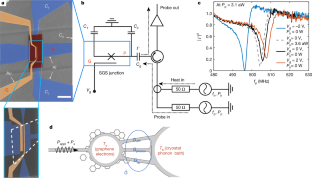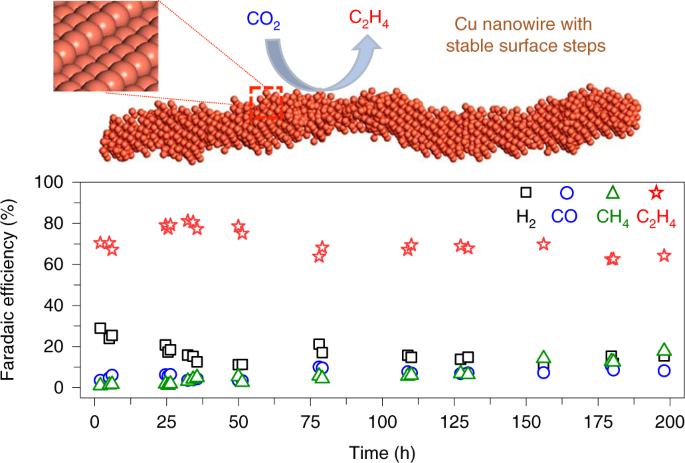(News Release: NREL, UK University Partner To Dive Deeper Into How Enzymes Digest Plastic)
2020/10/1 アメリカ合衆国・国立再生可能エネルギー研究所(NREL)

・ NREL と英国・ポーツマス大学等から成る研究チームが、プラスチック分解酵素によるポリエチレンテレフタレート(PET)の分解速度をさらに向上させることに成功。
・ 一般的な熱可塑性樹脂の PET は、使い捨ての飲料ボトルや衣類等に使用されている。
・ 日本の PET ボトルリサイクル工場で 2016 年に発見された細菌 Ideonella sakaiensis 201-F6 が、プラスチックを分解する酵素の PETase と MHETase を分泌するという発見をベースに、過去の研究でPETase の PET 分解能力の向上に成功しているが、分解速度が商用化には不十分であった。
・ 今回、PETase と MHETase が効果的に協働し、PET の分解速度が 2 倍になることを発見。PETase による PET の最初の分解後、MHETase がさらに分解を進めて PET の構成要素を生成する。
・ さらに、これらの酵素間のリンクを遺伝子操作することで、分解速度をさらに 3 倍向上させた。MHETase のみでは分解効果は無い。
・ これまで、MHETase は PETase のように研究が進んでいなかったが、今回、構造的、計量的、バイオケミカルおよびバイオインフォマティクスのアプローチを統合し、分子レベルでの洞察からその構造と機能を明らかにした。
・ また、MHETase のような酵素を含む他の細菌 2 種類も発見。プラスチック分解酵素はこれで 3 種類となる。
・ 本研究は、Bio-Optimized Technologies to keep Thermoplastics out of Landfills and the Environment
(BOTTLE)コンソーシアムの一環として実施され、米国エネルギー省(DOE)の先進製造業室(AMO)およびバイオエネルギー技術局(BETO)が資金を提供した。
URL: https://www.nrel.gov/news/press/2020/nrel-uk-partner-dive-deeper-into-how-enzymesdigest-plastic.html
<NEDO海外技術情報より>
(関連情報)
プラスチック廃棄物を従来の 6 倍速く分解する新しい酵素カクテル
(New enzyme cocktail digests plastic waste six times faster)
英・ポーツマス大学発表記事
URL: https://www.port.ac.uk/news-events-and-blogs/news/new-enzyme-cocktail-digestsplastic-waste-six-times-faster
(関連情報)
米国科学アカデミー紀要(PNAS)掲載論文(フルテキスト)
Characterization and engineering of a two-enzyme system for plastics depolymerization
URL: https://www.pnas.org/content/early/2020/09/23/2006753117
Abstract
Plastics pollution represents a global environmental crisis. In response, microbes are evolving the capacity to utilize synthetic polymers as carbon and energy sources. Recently, Ideonella sakaiensis was reported to secrete a two-enzyme system to deconstruct polyethylene terephthalate (PET) to its constituent monomers. Specifically, the I. sakaiensis PETase depolymerizes PET, liberating soluble products, including mono(2-hydroxyethyl) terephthalate (MHET), which is cleaved to terephthalic acid and ethylene glycol by MHETase. Here, we report a 1.6 Å resolution MHETase structure, illustrating that the MHETase core domain is similar to PETase, capped by a lid domain. Simulations of the catalytic itinerary predict that MHETase follows the canonical two-step serine hydrolase mechanism. Bioinformatics analysis suggests that MHETase evolved from ferulic acid esterases, and two homologous enzymes are shown to exhibit MHET turnover. Analysis of the two homologous enzymes and the MHETase S131G mutant demonstrates the importance of this residue for accommodation of MHET in the active site. We also demonstrate that the MHETase lid is crucial for hydrolysis of MHET and, furthermore, that MHETase does not turnover mono(2-hydroxyethyl)-furanoate or mono(2-hydroxyethyl)-isophthalate. A highly synergistic relationship between PETase and MHETase was observed for the conversion of amorphous PET film to monomers across all nonzero MHETase concentrations tested. Finally, we compare the performance of MHETase:PETase chimeric proteins of varying linker lengths, which all exhibit improved PET and MHET turnover relative to the free enzymes. Together, these results offer insights into the two-enzyme PET depolymerization system and will inform future efforts in the biological deconstruction and upcycling of mixed plastics.



